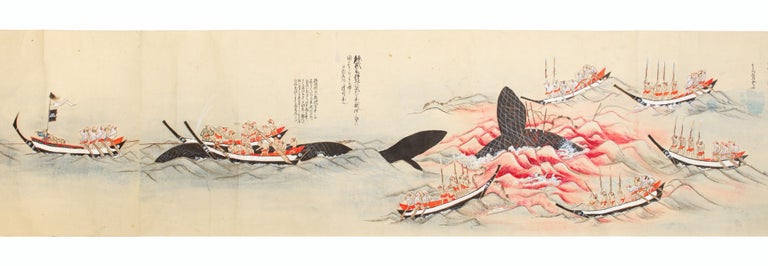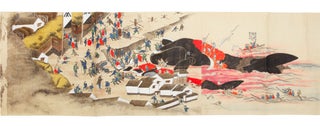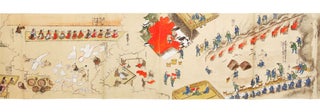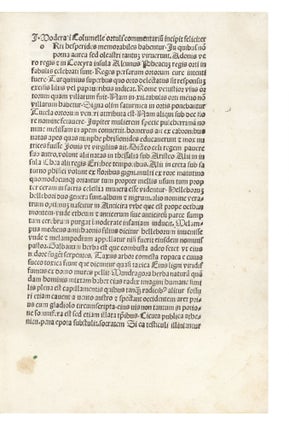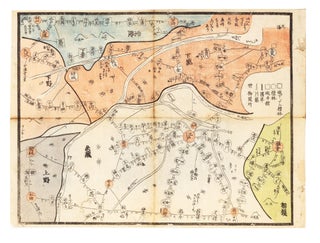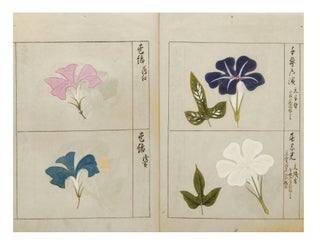A long, dramatic, and very finely illustrated scroll on paper (backed with mica paper & with wormholes repaired) with many fine brush and color paintings, including the use of gold & silver.
Scroll (360 x 9290 mm.). N.p.: late-Edo?
Our scroll, while it reveals no definitive place or date, was clearly produced in the early 19th century; it is uncommonly long and richly illustrated. In a series of distinct scenes, we see all the stages of whale hunting and processing. Each scene is a “beehive of activity.”
The first scene depicts the boats sent out for the hunt, including boats for harpooners, a large boat carrying an enormous net, and pursuit boats. The following scene shows an enormous whale — we see only his head and tail — chased by pursuit boats, which are directing the whale in the direction of an enormous net now spread out in the sea. The whale is spouting and has caused the water to become extremely turbulent.
The next scene shows the sailors spreading out the net in the middle of the ocean. This is followed by a scene showing the trapped whale surrounded by harpooners (on boats) who have hurled their harpoons into the whale’s flesh. In the following scene, with many harpoons in the whale, the ocean water has turned red with blood. Next, we see the boats towing the whale to shore.
We then see the whale hauled onto the beach and being butchered. There is much use of red pigment in this image. The beach area is tightly secured, and we see butchers cutting up the fat and flesh while others are carrying these products into the secured processing buildings. Government officials are observing. We also see a thief, who has tried to steal some flesh, being beaten.
The next scene shows the interior of the factory, with an assembly line of workers cutting up large pieces of fat with knives (the knives are painted in silver), so they can be placed in barrels and carried to the caldrons in order to render oil. We also see a storage area where the meat of the whale is stored. There are two balconies where government officials sit, examining the factory floor. There are workers measuring the meat on a scale and accountants keeping inventory using an abacus.
Now we move on to the factory room where the whale bones are processed. We see two men using a very large saw cutting up the rib bone and a row of women cutting the bones into smaller pieces. A man is beating a drum to give the women a working rhythm. All the sharp tools — axes, saws, and knives — are painted in silver. We also see several workers pounding bone into powder.
Our final scene shows the factory room where the sinews of the whale are being trimmed and hung to dry. Again, all the knives are painted with silver.
In very good condition, preserved in a wooden box.
Price: $22,500.00
Item ID: 6533

